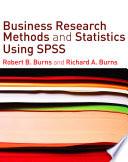Research Methods in Education and Psychology
Integrating Diversity with Quantitative and Qualitative Approaches
Focused on providing as full a picture as possible of what is considered to be "good" research, Research Methods in Education and Psychology explains quantitative and qualitative methods and incorporates the viewpoints of various research paradigms into the descriptions of these methods. It not only covers two of the standard paradigms (postpositivist and interpretive/constructivist) but also a relatively new emancipatory paradigm that is inclusive of the perspectives of feminists, ethnic/racial minorities, and persons with disabilities. In each chapter, Donna M. Mertens carefully explains a step of the research process from the literature review to types of research method to analysis and reporting of quantitative or qualitative approaches. As an added plus, she includes a sample study and abstract in each chapter to illustrate the concepts discussed in that chapter. To enhance your students reading, she has also included: - Chapter opening examples and lists of topics to consider - Boxed examples and points to consider - Sample studies in every chapter to illustrate key ideas - Sequence steps to guide each stage of the research process - End-of-chapter "Questions and Answers for Discussion and Application" to elicit further reflection of the material covered
- ISBN 10 : UOM:39015047486264
- Judul : Research Methods in Education and Psychology
- Sub Judul : Integrating Diversity with Quantitative and Qualitative Approaches
- Pengarang : Donna M Mertens,
- Kategori : Education
- Penerbit : SAGE Publications, Incorporated
- Bahasa : en
- Tahun : 1998
- Halaman : 422
- Google Book : http://books.google.co.id/books?id=pXWcAAAAMAAJ&dq=intitle:RESEARCH+METHODS+II&hl=&source=gbs_api
-
Ketersediaan :
In each chapter, Donna M Mertens carefully explains a step of the research process through the literature review, research method and analysis to reporting the research.









